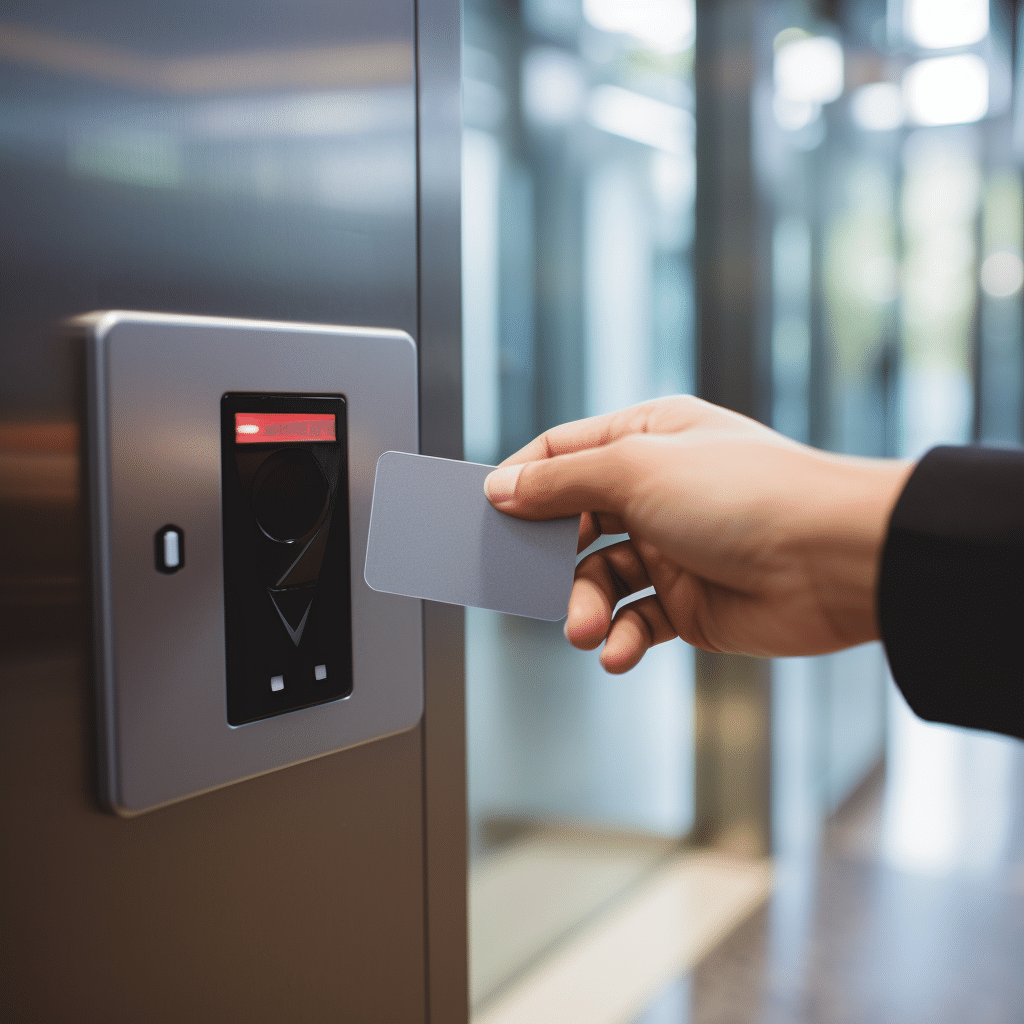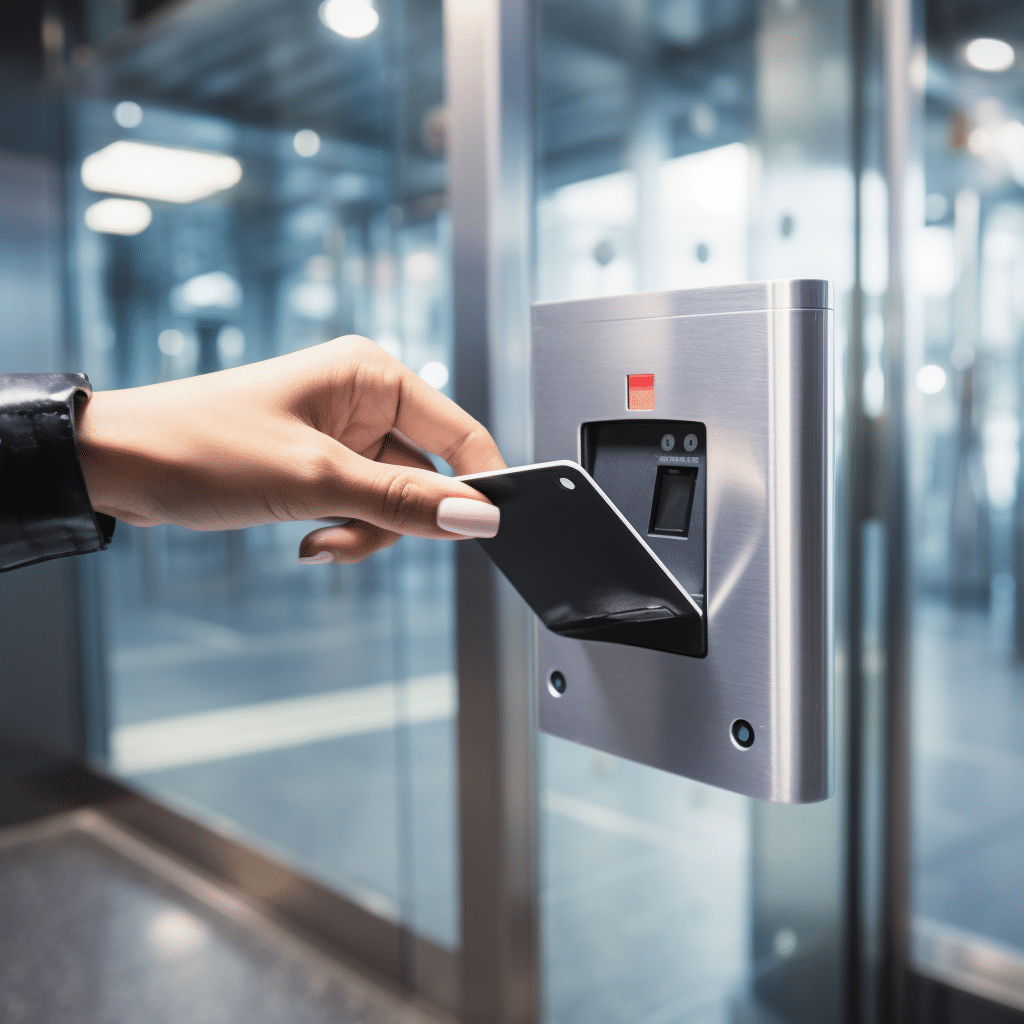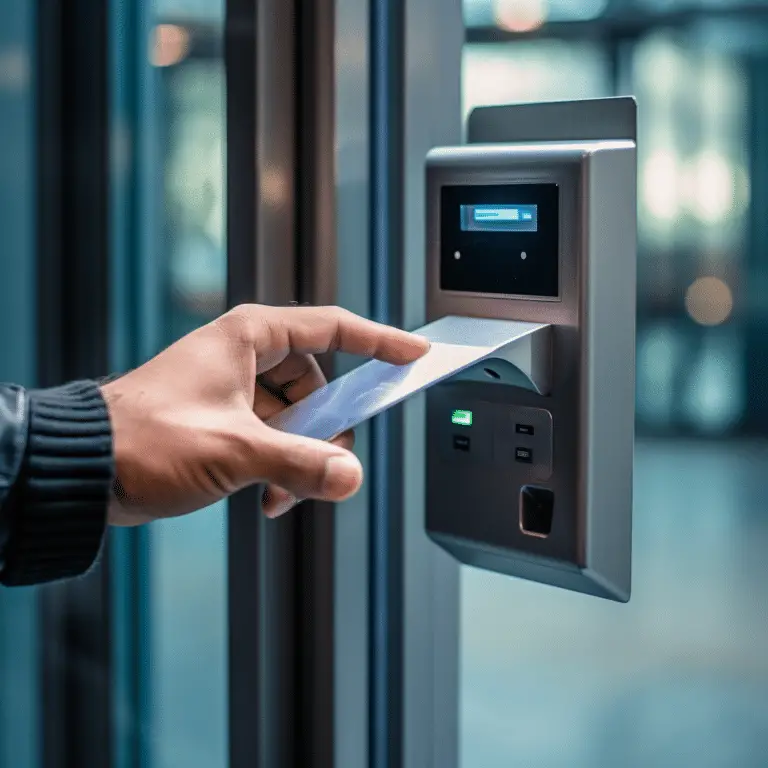Access cards are an essential component of access control systems in various establishments in the United States. They provide a secure and efficient way to grant or restrict entry to individuals. Different types of access cards cater to specific needs and security requirements. Let’s explore the various types of access cards available.

Key Takeaways:
- Access cards are crucial for access control systems.
- They provide a secure and efficient way to manage entry.
- There are different types of access cards for specific needs.
- RFID proximity access cards are popular.
- Smart card access cards offer enhanced security and functionality.
Proximity Access Cards
Proximity access cards, also known as contactless access cards, are a popular choice for access control systems. These cards utilize RFID (Radio Frequency Identification) technology, which allows for convenient and secure access to authorized individuals. Holding proximity access cards near a reader detects the built-in radio waves, enabling entry in seconds.
Easy use is a major benefit of proximity access cards. They are faster and more convenient than swipe cards because they don’t require reader touch. Proximity access cards are durable and easy to integrate into access control systems, making them a cost-effective option for many businesses.
“Proximity access cards offer a secure and efficient way to grant access to authorized individuals. The contactless technology eliminates the need for physical contact, providing a hygienic solution, particularly relevant in today’s health-conscious environment.”
These cards allow speedy, secure entrance to offices, schools, hospitals, and other restricted areas. They secure and streamline employee, student, and guest admission with their reliable solution .Large and small businesses use proximity access cards.
Proximity Access Cards: Comparative Features
| Features | Proximity Access Cards | Swipe Cards |
|---|---|---|
| Technology | RFID | Magnetic Stripe |
| Access Method | Contactless | Swipe |
| Durability | High | Moderate |
| Integration | Easy | Easy |
Smart Card Access Cards
Smart card access cards, also known as chip cards, are an advanced type of access card that incorporate embedded microchips, offering enhanced security and functionality. These cards utilize chip technology to securely store data, allowing for secure data storage and encryption protocols. The use of chip technology makes smart card access cards highly resistant to tampering or unauthorized access.
“Smart card access cards provide a robust and secure solution for access control systems. With their embedded microchips, they offer advanced encryption and authentication methods, ensuring only authorized individuals can gain entry. These cards are widely used in government buildings, banking institutions, and high-security facilities.”
In addition to access control, smart card access cards can perform various other functions. They can be used for cashless payments within a facility, eliminating the need for physical currency or credit cards. They can also store personal information, such as medical records or employee details, securely within the chip. This multifunctionality makes smart card access cards a versatile solution for a range of applications.
Advantages of Smart Card Access Cards
- Enhanced Security: The embedded microchips in smart card access cards provide robust security measures, such as encryption and authentication protocols, making them highly secure against unauthorized access and data breaches.
- Functionality: Smart card access cards can perform various functions beyond basic access control, such as cashless payments and data storage, adding convenience and efficiency to their usage.
- Durability: The chip technology in smart cards makes them durable and resistant to physical damage, ensuring their longevity and reliability.
Table: Comparison of Access Card Types
| Access Card Type | Technology Used | Applications |
|---|---|---|
| Proximity Access Cards | RFID | Offices, schools, hospitals |
| Smart Card Access Cards | Chip technology | Government buildings, banking institutions, high-security facilities |
| Biometric Access Cards | Biometric technology (e.g., fingerprint recognition) | Research labs, data centers, government agencies |
| Magnetic Stripe Access Cards | Magnetic stripe technology | Hotels, gyms, other establishments requiring a large number of cards |
In conclusion, smart card access cards offer advanced security features, multifunctionality, and durability. With their embedded microchips and chip technology, they are a reliable choice for access control systems in various industries and facilities.
Biometric Access Cards
Biometric access cards are a cutting-edge solution that utilizes advanced biometric technology to provide secure access control. These cards go beyond traditional methods by incorporating unique physiological or behavioral characteristics of individuals, such as fingerprint recognition, to grant access. The use of biometric identifiers offers a high level of security, as they are difficult to replicate or forge.
One of the key features of biometric access cards is fingerprint recognition. This technology requires users to place their finger on a sensor for verification. The card’s embedded system analyzes the fingerprint pattern and matches it against a database of authorized prints. Only when a match is found, access is granted. This ensures that only individuals with authorized fingerprints are allowed entry, preventing unauthorized access.
Biometric access cards are more secure since they use unique identifiers. Biometric information is unique and cannot be copied like proximity access cards or smart cards. Biometric access cards are appropriate for sensitive locations including research labs, data centers, and government organizations.
Benefits of Biometric Access Cards
- Enhanced Security: Biometric access cards offer a higher level of security compared to other types of access cards. The use of unique identifiers ensures that access is granted only to authorized individuals.
- Convenience: Biometric access cards eliminate the need for carrying physical cards or remembering passwords. Users simply need to place their finger on the sensor for quick and convenient access.
- Efficiency: Biometric access cards enable fast and accurate identification, reducing waiting times and improving overall access control system efficiency.
- Biometric identifiers reduce fraud because fingerprints are unique and cannot be copied or stolen.
In conclusion, biometric access cards provide a highly secure and efficient solution for access control. With their use of biometric technology, such as fingerprint recognition, they ensure that only authorized individuals gain entry to sensitive areas. These cards offer enhanced security, convenience, and efficiency, making them a valuable choice for organizations looking to strengthen their access control systems.

Magnetic Stripe Access Cards: The Versatile Choice for Secure Entry
When it comes to efficient and flexible access control, magnetic stripe access cards are a popular choice in various establishments. Also known as swipe cards, these cards utilize magnetic stripe technology to provide secure and convenient entry to authorized individuals.
Multiple uses make magnetic stripe access cards useful. Swipe the card through a magnetic stripe reader, and the entry system gets the encoded information immediately. This makes the process smooth and reliable, especially in hotels and gyms with many cards to distribute and control.
Access cards with magnetic stripes are cheap and safe.Rear magnetic stripe data is encrypted and uncopyable. This makes it ideal for businesses that need a reliable access control system.
Whether it’s managing guest access to hotel rooms or monitoring entry to restricted areas, magnetic stripe access cards provide a practical solution that meets the needs of various industries. Their ease of use, compatibility with existing infrastructure, and affordability make them a reliable choice for any organization seeking efficient access control.
FAQ
What are access cards?
Access cards are an essential component of access control systems in various establishments in the United States. They provide a secure and efficient way to grant or restrict entry to individuals.
What types of access cards are available?
There are several types of access cards available, including proximity access cards, smart card access cards, biometric access cards, and magnetic stripe access cards.
How do proximity access cards work?
Proximity access cards use RFID (Radio Frequency Identification) technology. These cards emit radio waves that are read by proximity card readers, allowing authorized individuals to gain access by holding the card near the reader.
What are smart card access cards?
Smart card access cards have embedded microchips that provide enhanced security and functionality. These cards securely store data and can perform various functions beyond basic access control, such as making payments or storing personal information.
How do biometric access cards grant access?
Biometric access cards utilize biometric technology to grant access based on unique physiological or behavioral characteristics of an individual. These cards often include fingerprint recognition technology, requiring users to place their finger on a sensor for verification.
What are magnetic stripe access cards?
Magnetic stripe access cards, also known as swipe cards, feature a magnetic stripe on the back of the card. The encoded data on this stripe can be read by magnetic stripe card readers, allowing access when users swipe the card through the reader.

